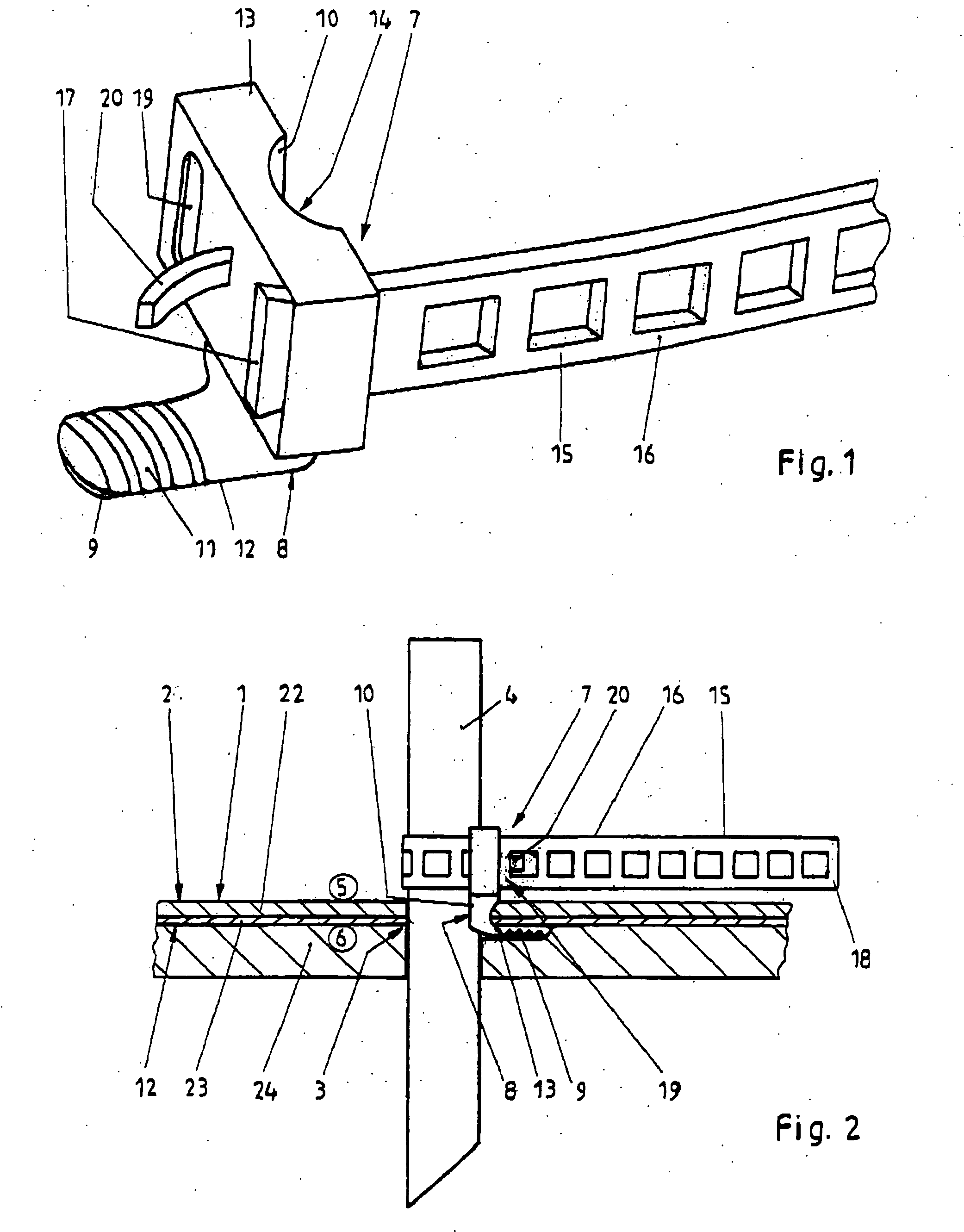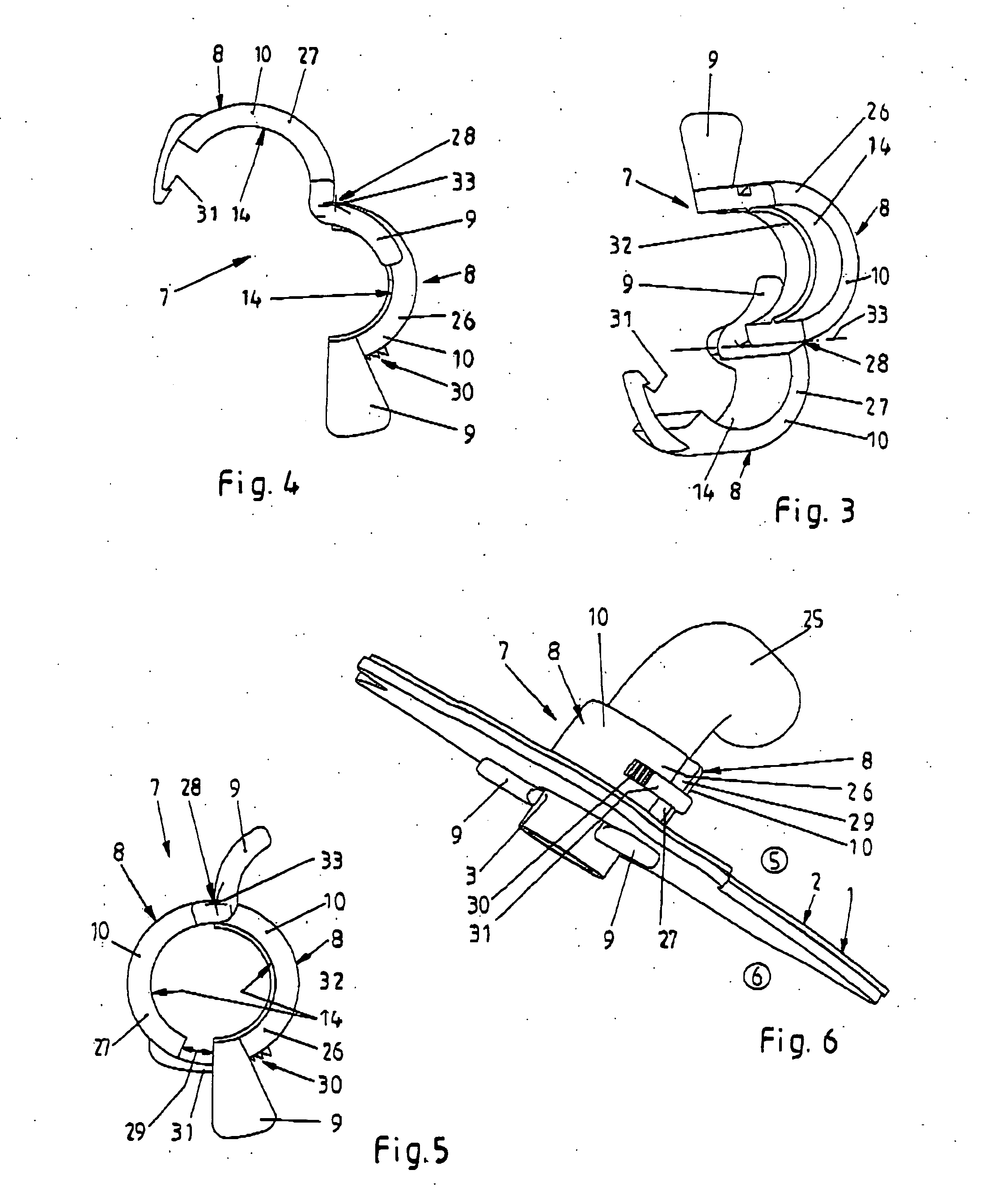Device for fixing a tube within a hole in a body tissue layer
- Summary
- Abstract
- Description
- Claims
- Application Information
AI Technical Summary
Benefits of technology
Problems solved by technology
Method used
Image
Examples
Embodiment Construction
[0030] Referring now in greater detail to the drawings, FIGS. 1 and 2 illustrate a device 7 which is intended for fixing a tube, such as a trocar 4 tube shown in FIG. 2, with regard to a body tissue layer 1. The body tissue layer typically is a skin 2. The trocar tube has a smooth wall. A hole 3 is provided in the tissue layer 1, i.e. cut-in with a scalpel, through which the trocar tube 4 extends from an exterior 5 to an interior 6 of the body tissue layer 1. The device 7 includes an L-shaped retaining element 8 having two limbs 9 and 10. In the use of the device 7 according to FIG. 2, the limb 9 is arranged at the interior 6 of the tissue layer 1, and it is placed flat on the tissue layer 1 there. Particularly, it is arranged at the interior 6 of a cutis 12 consisting of an epidermis 22 and a corium 23 of the skin 2, i.e. it is still above a subcutis 24. An upper side of the limb 9 may be provided with a contour 11 as depicted in the figures to stop the tissue layer 1 from involunt...
PUM
 Login to View More
Login to View More Abstract
Description
Claims
Application Information
 Login to View More
Login to View More - R&D
- Intellectual Property
- Life Sciences
- Materials
- Tech Scout
- Unparalleled Data Quality
- Higher Quality Content
- 60% Fewer Hallucinations
Browse by: Latest US Patents, China's latest patents, Technical Efficacy Thesaurus, Application Domain, Technology Topic, Popular Technical Reports.
© 2025 PatSnap. All rights reserved.Legal|Privacy policy|Modern Slavery Act Transparency Statement|Sitemap|About US| Contact US: help@patsnap.com



